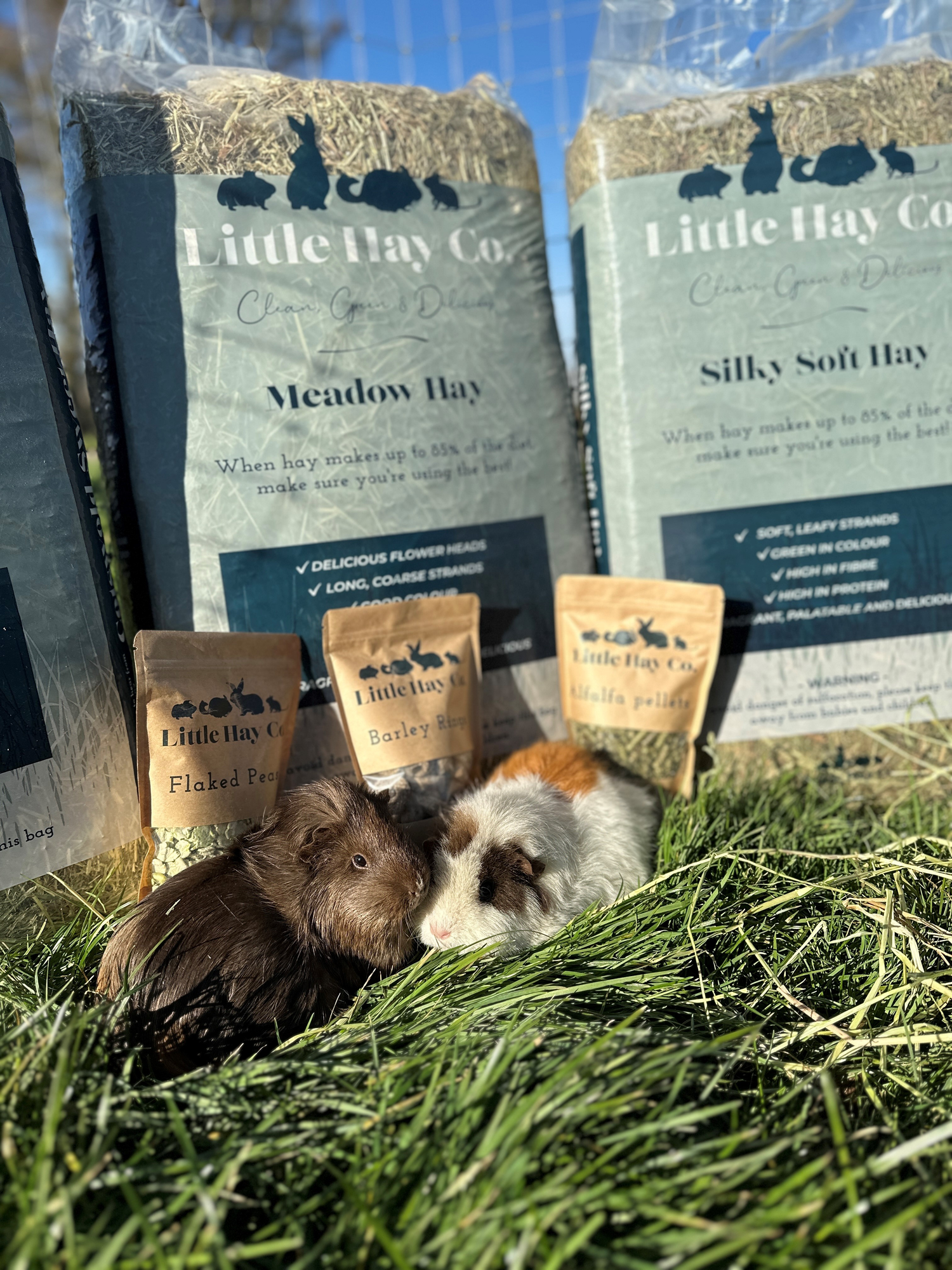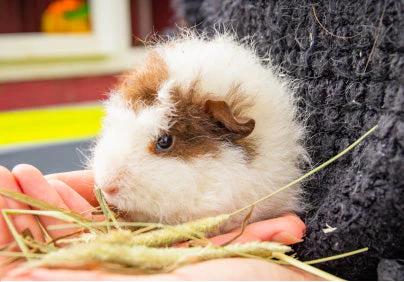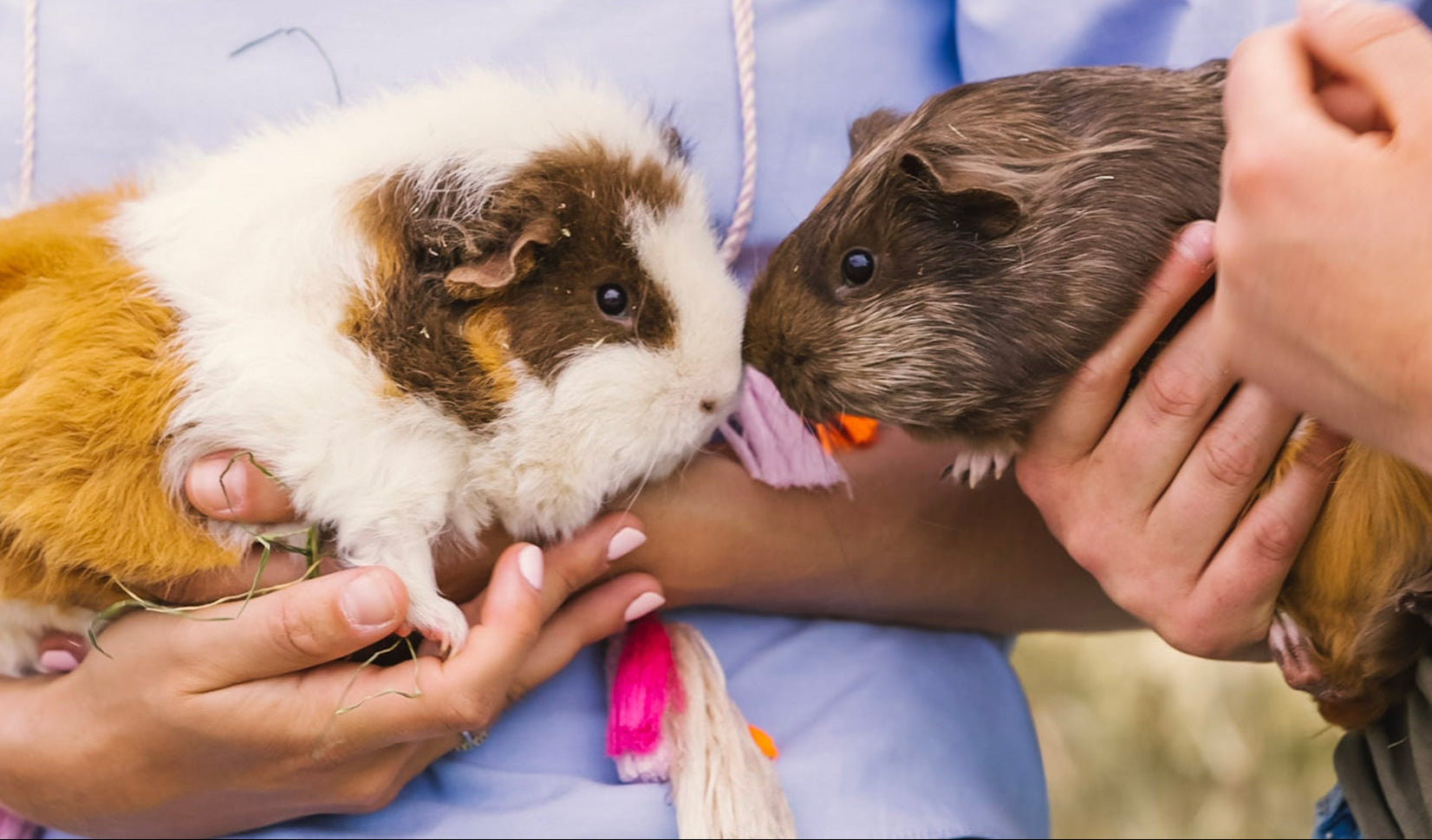What are the types of hay
There are many types of hay such as Timothy Grass Hay, Meadow Hay and Alfalfa Hay. All grazing animals from horses to rabbits and guinea pigs eat hay because their digestive systems are designed to be continually working.
Timothy Hay
Timothy Hay is pale green in colour, high in fibre and its coarse texture helps to grind down the teeth, keeping both the teeth and jaw in good order. Timothy Hay has history dating back to the 1700's when it is believed to have been promoted by a farmer named Timothy Hanson for its use as a forage. In the UK Timothy Hay is cut once per year, when the grass has formed the seed heads that make this hay easily identifiable. Timothy Hay can be used as a feeding hay, being lower in calories it is suitable to be given as a daily forage.
Legume Hay
Alfalfa Hay and Clover Hays are a part of the legume hay family. Generally speaking legume hays contain more energy and more protein than grass hays. The alfalfa plant is more leafy and less structured than grass plants which when dried can make the hay appear to be more dusty when actually it is the leaf that has shattered from drying out and transit. Legume hays differ to other types of hay because it is higher in calcium so should only be offered at certain life stages, we go into more detail on this further down.
Orchard Grass Hay
Orchard Grass Hay is a soft, sweet smelling Hay. Also known as meadow hay in different countries. Our Silky Soft Hay contains a variety of grass Hay species - Timothy, Rye and Fescue grass hay. This makes it ideal as a feeding hay or a bedding hay. Because it is a soft hay it works as a bedding hay and has less risk of poking your guinea pigs eyes when they are foraging.
Oat Hay
Oat hay isn't technically grass hay but it does still have nutritional benefits to rabbits and guinea pigs. It is high in fibre so great for forage and digestion but it is also high in protein so best to be offered to tempt fussy feeders or to offer occasionally as a treat rather than a full time feeding option.
Rye Grass Hay
Rye Grass Hay is softer in strand than Timothy Hay. Rye Grass Hay is also higher in protein but low in calcium making it an ideal choice for your adult rabbit or guinea pig. Rye Grass Hay is generally sweeter than Timothy Hay so is good for tempting fussy feeders. Our Rye grass hay is named Cotswold sweet on our selling platforms.
What is the difference between Timothy hay and Alfalfa hay?
Is Alfalfa or Timothy hay better?
Alfalfa and timothy hay provides options for pets with different feeding requirements. The type of hay that you will require depends on the life stage of the animal as their needs change as they grow. The difference between alfalfa hay and Timothy hay has many factors - calcium levels, protein levels and the nutritional requirements of the pet.
Alfalfa hay is best suited to younger animals because it offers higher calcium and protein, it provides them with the nutrients required for growth and bone development. By the time your Rabbit is 6 months old you should stop feeding alfalfa and wean them onto a hay lower in calcium. The only time you would offer alfalfa hay to a fully grown rabbit is when they are pregnant or nursing baby rabbits as they will require more calcium, protein and phosphorus as well as more nutrients to support them with the additional demands on their body. Adult rabbits require lower levels of calcium and phosphorus than at other life stages. Too much calcium and too much phosphorus can lead to the risk of your adult rabbit forming urinary stones.
Timothy Hay vs alfalfa hay? Timothy hay or other grass hays would be the appropriate choice for your adult pet one they have been weaned off alfalfa. Timothy hay is lower in calories than alfalfa so is the better choice to feed long term. The coarseness of the Timothy hay is better for dental health and the fibre content keeps your pets digestive system working continually as it was designed for.
What is the difference between Timothy Hay and Meadow Hay?
Timothy hay is a coarse hay, long in strand and has plenty of delicious seed heads that pets love. Pure Timothy Hay is a favorite of both Rabbits and Guinea pigs because of these seeds. The coarseness of the strands provides the diet with more fiber for the gut to digest and there is also the added benefit of the hay providing teeth maintenance for small pets.
Meadow Hay is a blend of grass hays. Our meadow hay contains Timothy, Fescue and Rye Grasses. This is a great way to offer different types of fiber in your small pets diet. It will also encourage them to forage and find the feeds and strands that they prefer to eat.
Essentially the two hays will offer similar fiber content and the necessary nutrients for your small pets. Neither variety will have too many calories to be offered daily. when choosing which is the best hay for your pets diet you should look for a hay that is dust free, has a fresh smell and is free from contaminants.
What is the importance of hay in your pet's diet?
If you have a pet that is a grazing species it means that the digestive system relies on fibre to function whether that is a horse, guinea pig, rabbit or chinchilla. High quality hay should be available for them to constantly graze on to keep their intestines working. During the digestion process the gut ferments the fiber meaning that your pet has a built in central heating system. Hay should make up to 85% of your pets diet with the rest being made up of nutritionally balanced feed so your pet receives their daily requirements of vitamins.
When choosing which hay to buy there will be many factors influencing your decision - availability, price, quality of hay are all things to consider. Where you prefer to purchase from will also be a factor. Generally your local farm and tractor supply would carry less options in stock than dedicated pet feed stores but that still doesn't mean that it's not a good option. The big difference would be if you wanted to purchase hay by the bale or if a more compacted and dust extracted bag would suit your storage options, how long it will take your pet to eat and your available budget.















1 comment
Hi – our bunnies age 9 months love all their hay so far and they have tried all bar Timothy so was wondering what Timothy blend consists of and how it differs to pure Timothy?
Thanks